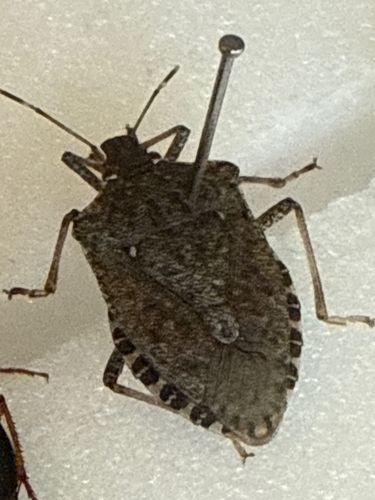Brown Marmorated Stink Bug
Scientific Name: Halyomorpha halys
Order & Family: Hemiptera, Pentatomidae
Size: 1.2 - 1.7 cm (0.5 - 0.7 inches) in length

Natural Habitat
Originally from East Asia (China, Japan, Korea, Taiwan), it has become an invasive species in North America and Europe. It inhabits agricultural fields, orchards, gardens, and urban/suburban environments. During colder months, it congregates inside homes and other structures seeking overwintering sites.
Diet & Feeding
Polyphagous herbivore, feeding on a wide variety of plants including fruits (apples, peaches, berries), vegetables (corn, tomatoes, soybeans), ornamental plants, and shade trees. They use their piercing-sucking mouthparts to feed on plant sap, seeds, and fruits.
Behavior Patterns
Adults are typically active from spring through fall. Females lay clusters of barrel-shaped eggs on the underside of leaves. Nymphs hatch and go through five instars before becoming adults. They are known for their ability to release a foul-smelling liquid from scent glands when disturbed, hence the common name 'stink bug'. They often aggregate in large numbers on the sunny sides of buildings in the fall as they search for overwintering sites.
Risks & Benefits
Risks: Significant agricultural pest, causing considerable damage to a wide range of crops, leading to economic losses for farmers. They are also a nuisance pest when they invade homes in large numbers in the fall. Benefits: No significant known benefits in the regions where it is invasive. In its native range, it is part of the natural food web, but its invasive success is partly due to a lack of natural predators in new regions.
Identified on: 9/28/2025